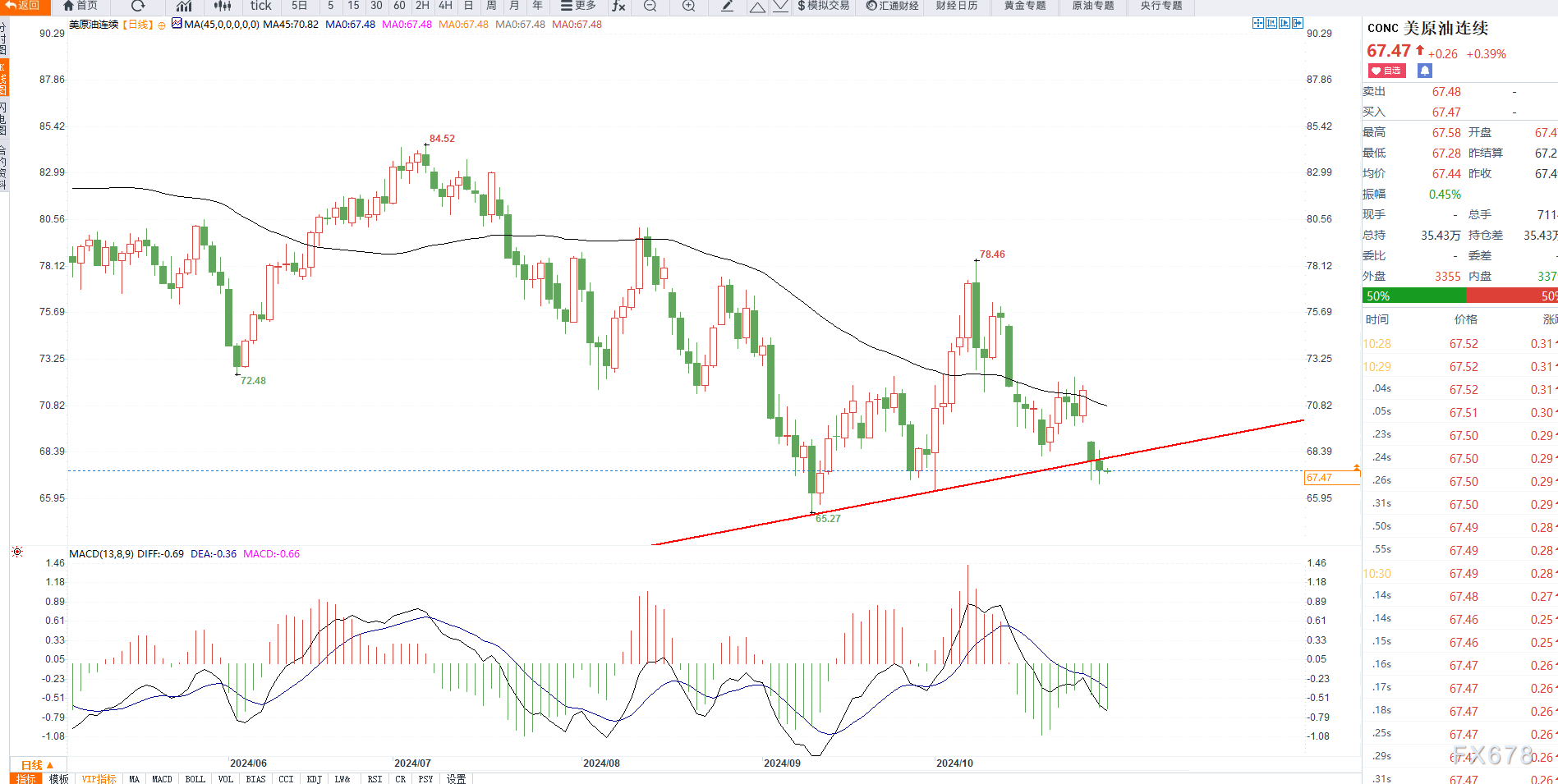Will EIA inventories drive oil prices to continue plummeting as US crude oil oscillates at low levels?
On Wednesday (October 30th), US crude oil fluctuated slightly during the Asian trading session and has not yet accelerated its decline. Yesterday's unexpected decrease in US API crude oil inventories eased the downward trend of US crude oil, and there is a possibility of stabilization in the short term. However, there is still no sign of reversal in fundamentals. It is necessary to pay attention to changes in EIA inventory data during the day to see if there will be an unexpected increase, which will cause US crude oil to fall below the range support and accelerate its decline.
API data shows that US crude oil inventories decreased by 600000 barrels last week, and the market had originally expected an increase of 2.3 million barrels. However, with the easing of the Middle East war premium shifting the focus back to weak fundamentals, including sluggish demand and ample supply, and traders anticipating OPEC+'s December production plan, downside bias still exists.
Schneider Electric senior commodity analyst Brian Steinkamp pointed out that there are news reports that Israeli Prime Minister Benjamin Netanyahu appears to be holding an internal meeting with political and military advisers on Tuesday evening local time to discuss possible diplomatic ways to resolve the dispute between Israel and Hezbollah.
Although this move has to some extent eased the current market concerns, the geopolitical situation in the Middle East remains tense after Israel avoided airstrikes on Iranian military facilities over the weekend.
In a report, Ipek Ozkadskaya, a senior analyst at Ruixun Bank, pointed out that during Monday's sell-off, most of the long positions in West Texas Intermediate (WTI) crude oil at around $70 per barrel may have been cleared. However, trend and momentum indicators still show a negative trend, and futures have not yet been oversold, indicating that there is still room for further price decline in the short term. The bearish target price is $65 per barrel. He also believes that although there is a possibility of consolidation in the near future, in the medium to long term, the momentum still tends to decline.
Against the backdrop of a global economic slowdown, especially the news that Volkswagen may close its factories for the first time, further exacerbates market concerns about the demand side. At the same time, the Organization of the Petroleum Exporting Countries (OPEC) seems to be preparing to relax production restrictions, and non OPEC countries are also increasing crude oil production, which is putting increasing pressure on market supply.
The market is also looking forward to the upcoming US oil supply report from the Energy Information Administration (EIA) on Wednesday. According to a survey by S&P Global Commodity Insights, analysts predict that US commercial crude oil supply will increase by 800000 barrels last week (as of October 25th), gasoline inventories will decrease by 1.1 million barrels, and distillate inventories will decrease by 1.4 million barrels.
Andy Lipow, President of Lipow Oil Associates, said, "Due to Israel's deliberate avoidance of targeting crude oil facilities and perhaps encouragement from the United States, the oil market has returned to a state of oversupply
He added that not only has oil production been increasing in major countries such as the United States, Canada, and Brazil, but also in smaller countries such as Argentina and Senegal.
Lipow stated, 'Oil prices will continue to face pressure for the remainder of this year, and Brent crude oil prices may find it difficult to reach $80 in the foreseeable future.'.

Daily chart of US crude oil
Tips:This page came from Internet, which is not standing for FXCUE opinions of this website.
Statement:Contact us if the content violates the law or your rights
